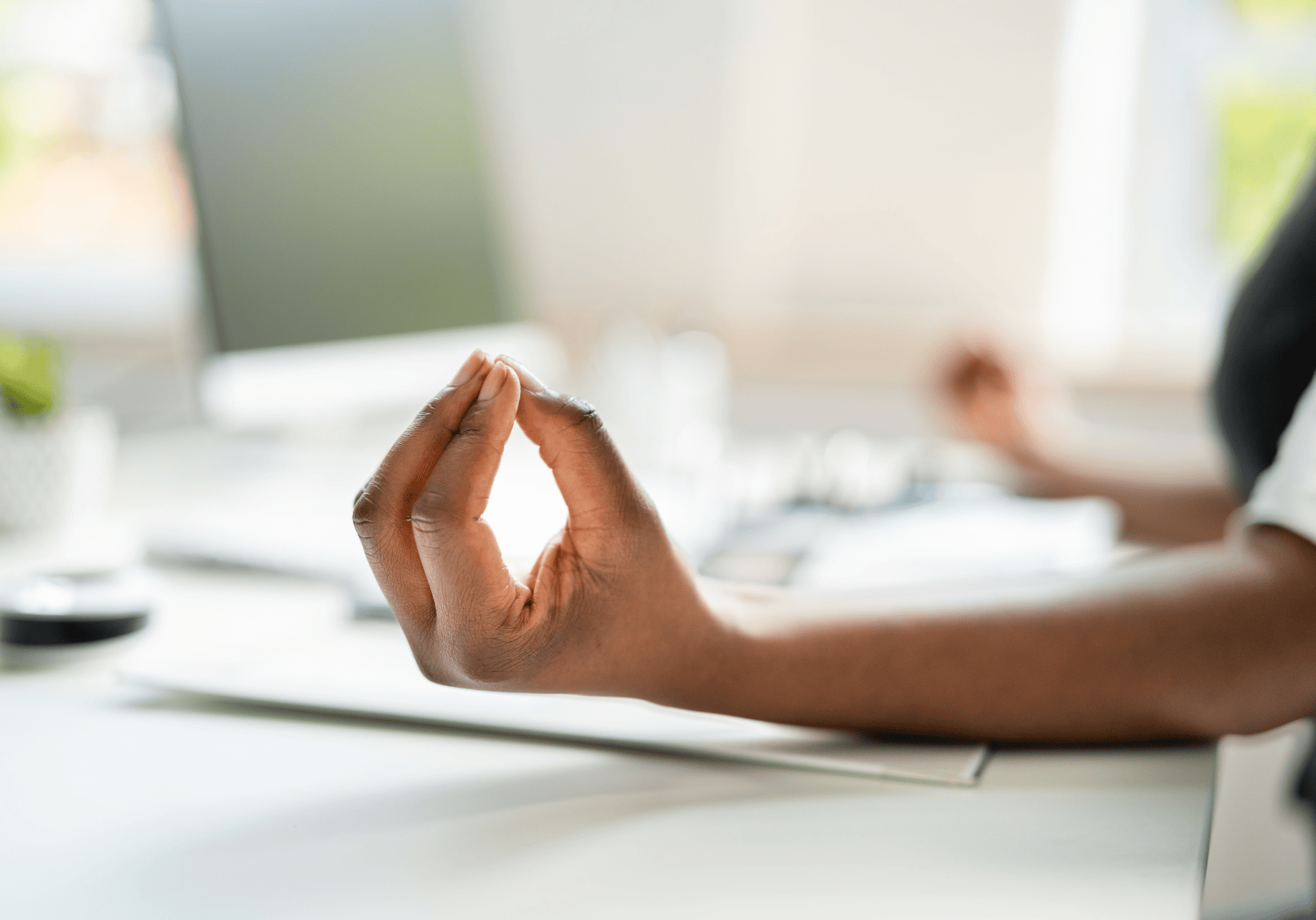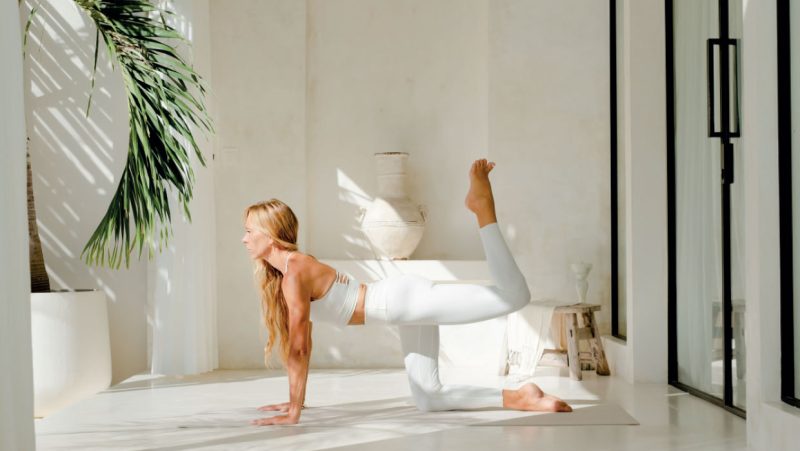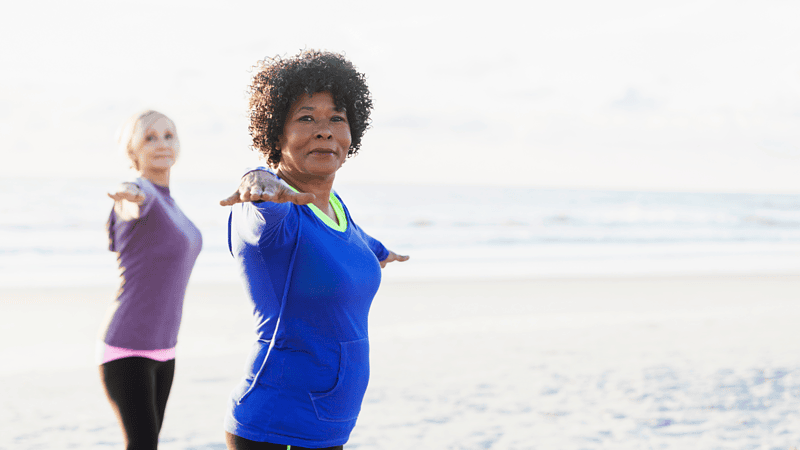
Desk Yoga for the Modern Office Worker
A 10-Minute Sequence for Flexibility and Stress Relief - By Josie Ferrara
Reading time: 3 minutes
In today’s fast-paced work environment, spending long hours sitting at a desk can take a toll on your body and mind. Prolonged sitting can lead to stiffness, poor posture, and increased stress levels. Incorporating yoga into your daily routine, even while sitting at your desk, can be a game-changer.
Desk yoga offers a simple yet effective way to stretch, strengthen, and relax your body, improving both physical and mental well-being. By just taking 10 minutes out of your work day, you can alleviate tension, improve your posture and boost your energy levels.
The Benefits of Desk Yoga
Desk yoga is an accessible practice that adapts traditional yoga poses for a seated environment. The benefits of incorporating these poses into your workday are numerous:
- Improved Posture: Many of us develop poor posture from leaning forward at our desks, leading to rounded shoulders and back pain. Regular practice helps correct poor posture habits developed from sitting for extended periods, reducing strain on the spine and shoulders.
- Reduced Stress*: Deep breathing and gentle movements help calm the nervous system. This lowers stress levels and anxiety, promoting a sense of relaxation.
- Enhanced Flexibility: Sitting for extended periods of time, causes muscles to tighten and shorten, particularly in the hips, hamstrings and lower back. Stretching throughout the day keeps muscles supple, preventing stiffness and promoting better circulation.
- Increased Energy: Short yoga breaks can invigorate your body, reducing fatigue and boosting overall energy levels.
- Better Focus: Taking a few moments to center yourself can improve concentration and productivity, making your workday more efficient.
10-Minute Desk Yoga Sequence
This simple yet effective desk yoga sequence is designed to be performed in the comfort of your office chair, making it easy to integrate into your daily routine.
1. Seated Mountain Pose (Tadasana Variation)
- How to: Sit up straight with your feet flat on the floor. Engage your core, roll your shoulders back, and extend your arms alongside your body with palms facing forward.
- Benefits: This pose promotes proper posture and helps you find balance and stability.
- Variation: For an added challenge, press your feet firmly into the floor and lift your hands overhead, engaging your core to prevent arching your back.
2. Seated Forward Bend (Paschimottanasana Variation)
-
- How to: Sit at the edge of your chair with feet hip-width apart. Inhale to lengthen your spine, and as you exhale, hinge at your hips to fold forward. Let your hands rest on the floor or your shins.
- Benefits: Stretches the back, shoulders, and hamstrings, releasing tension.
- Variation: If your hamstrings are tight, rest your hands on your thighs instead of reaching for the floor. For a deeper stretch, place a yoga block or a book under your hands.
3. Seated Warrior I (Virabhadrasana I Variation)
-
- How to: Sit sideways on your chair with your right leg extended behind you and your left knee bent at 90 degrees. Inhale and lift your arms overhead.
- Benefits: Opens the hips, stretches the front of the body, and strengthens the legs.
- Variation: For beginners, keep the back foot closer to the chair for a gentler stretch. To deepen the pose, extend the arms further overhead and look up
4. Seated Chair Pose (Utkatasana Variation)
- How to: Sit at the edge of your chair with feet hip-width apart. Extend your arms forward and rise slightly off your seat, engaging your thighs and core.
- Benefits: Strengthens the legs and core, improving stability.
- Variation: If this is too challenging, keep your hands on your thighs for support. For a greater challenge, lift one foot off the floor, balancing on the other.
5. Seated Pigeon Pose (Eka Pada Rajakapotasana Variation)
- How to: Sit with your back straight. Cross your right ankle over your left knee, flexing the right foot. Lean forward slightly to deepen the stretch.
- Benefits: Opens the hips and stretches the glutes, which can become tight from prolonged sitting.
- Variation: If your hips are tight, sit further back in your chair and lean back slightly instead of leaning forward. To deepen the stretch, press down on your right knee
6. Seated Spinal Twist (Ardha Matsyendrasana Variation)
- How to: Sit with your feet flat on the floor. Place your right hand on the back of your chair and your left hand on your right knee. Inhale to lengthen your spine, then exhale to twist to the right. Repeat on the other side.
- Benefits: Enhances spinal mobility and aids digestion.
- Variation: For a gentler twist, keep your hands on your lap and twist only from the waist up. To deepen the twist, press your back hand into the chair and use it as leverage.
7. Seated Relaxation Pose (Savasana Variation)
- How to: Sit back in your chair, close your eyes, and rest your hands in your lap. Take deep breaths, allowing your body and mind to relax completely.
- Benefits: Promotes relaxation and reduces stress.
- Variation: If possible, recline slightly in your chair and prop your feet up on a low stool for deeper relaxation.
Desk yoga is a powerful tool for maintaining your physical and mental well-being during a busy workday. By taking just 10 minutes to move through these poses, you can alleviate tension, improve your posture, and boost your energy levels.
Incorporating this simple routine into your daily schedule will leave you feeling more balanced, focused, and ready to tackle whatever challenges come your way. Whether you're a yoga enthusiast or new to the practice, desk yoga offers a practical solution to maintain your physical and mental health while at work. Start incorporating these stretches into your daily routine, and notice the positive impact it has on your body and mind!
*commission earned from this link.





